Land Invertebrates
Media
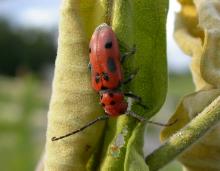
Species Types
Scientific Name
About 1,000 species in North America north of Mexico
Description
Longhorned beetles are elongated and cylindrical, with antennae that are at least half the length of the body — sometimes much longer. The larvae are grubs that bore in wood or other plants. Some are serious pests.
Media
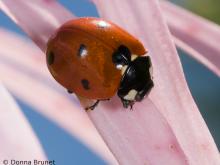
Species Types
Scientific Name
Nearly 500 species in North America north of Mexico
Description
Lady beetles are beloved for many reasons. Farmers like the way they devour injurious aphids and scale insects. Everyone else appreciates their bright colors and shiny, compact bodies.
Media
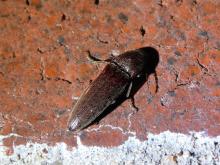
Species Types
Scientific Name
Approximately 1,000 species in North America
Description
Their streamlined shape is distinctive, but the behavior of click beetles is even more unique: Placed on their backs, these beetles flip suddenly into the air with an audible click.
Media

Species Types
Scientific Name
Pachypsylla spp.
Description
Hackberry psyllids are a genus of tiny, planthopper-like bugs. As larvae, they develop within the leaves, twigs, buds, or bark of hackberry trees. The trees form warty galls in response to their presence. In the fall, tiny adult hackberry psyllids cling to window screens.
Media
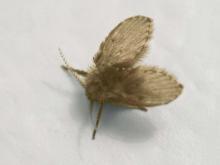
Species Types
Scientific Name
Members of subfamily Psychodinae
Description
Moth flies look like tiny, hairy moths. People usually notice them perching next to sinks in the bathroom or kitchen. When disturbed, they usually don't fly very far before landing again, for they are weak fliers.
Media
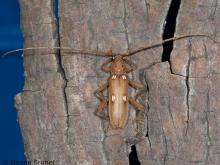
Species Types
Scientific Name
Eburia quadrigeminata
Description
The ivory-marked beetle is a longhorned beetle whose larvae bore deep into the heartwood of a variety of deciduous trees, including oak, hickory, maple, cherry, ash, elm, and more. It can live for 40 years.
Media

Species Types
Scientific Name
About 1,700 species in North America north of Mexico
Description
The scarab beetle family is very large, with breathtaking variety — and often great beauty. Many scarabs are large and colorful.
Media
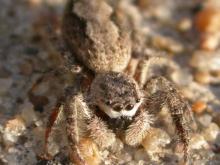
Species Types
Scientific Name
Platycriptus undatus
Description
The tan jumping spider usually lives on tree trunks. Its gray, tan, and brown coloration camouflages it against tree bark. There is usually an undulating pattern on the abdomen.
See Also



Media

Species Types
Scientific Name
Cisseps fulvicollis
Description
The yellow-collared scape moth is more often “orange-collared.” And whether you think it looks more like a firefly or a wasp, it’s still a moth!
Media

Species Types
Scientific Name
Nearly 150 species in North America north of Mexico
Description
Slim, delicate plume moths are instantly recognizable by their T-shaped silhouette, long legs, and muted shades of tan and brown. It can be hard to separate the various species.
Media

Species Types
Scientific Name
Pyrrharctia isabella
Description
Not many people know the adult Isabella tiger moth when they see one, but we’re all acquainted with its caterpillar, the woolly worm, or woolly bear.
About Land Invertebrates in Missouri
Invertebrates are animals without backbones, including earthworms, slugs, snails, and arthropods. Arthropods—invertebrates with “jointed legs” — are a group of invertebrates that includes crayfish, shrimp, millipedes, centipedes, mites, spiders, and insects. There may be as many as 10 million species of insects alive on earth today, and they probably constitute more than 90 percent all animal species.





















